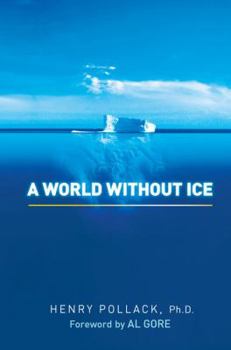A World Without Ice
Select Format
Select Condition 
Book Overview
A co-winner of the 2007 Nobel Peace Prize offers a clear-eyed explanation of the planet's imperiled ice. Much has been written about global warming, but the crucial relationship between people and ice... This description may be from another edition of this product.
Format:Hardcover
Language:English
ISBN:1583333576
ISBN13:9781583333570
Release Date:October 2009
Publisher:Avery Publishing Group
Length:287 Pages
Weight:1.32 lbs.
Dimensions:1.1" x 6.3" x 9.2"
Age Range:18 years and up
Grade Range:Postsecondary and higher
Customer Reviews
3 ratings
Glenn Beck should read this book
Published by Thriftbooks.com User , 14 years ago
This book was clearly written for the layman. My guess is that it is aimed at those who either doubt that man-made global warming is happening, or those who are trying to convince such people that it is happening. Those who are already familiar with the reality of anthropogenic global warming may not learn new facts from this book, but they might learn new ways of arguing their position when confronting doubters. Rather than overwhelming the reader with graphs and statistics, Dr. Pollack presents just the essential data in clear, concise forms. Today's high school students will likely live to see the full impact of global heating (my preferred term... heat is melting the ice now, and the real warming will begin when the ice is gone). This book is good material for high school science students, in my opinion. I hope it can become a big influence on the young, whose lifestyles, including consumer choices, are still in their formative stages.
Excellent overview of the most important effect of climate change
Published by Thriftbooks.com User , 14 years ago
'A World Without Ice' by Henry Pollack provides a well-rounded introduction to the most important change arising due to global warming - the loss of substantial amounts of earth's ice. The account is highly readable and entertaining, in addition to providing a clear summary of how far this process is already advanced and where it will likely lead. The changes already under way include substantial loss of high elevation glaciation at low latitudes (Kilimanjaro is projected to be ice-free by 2020 etc.). As the book makes clear, the most disruptive changes for humans involve the loss of ice near the earth's poles. Dr. Pollack shows that reasonable projections of the warming process reveal a potential for sea level rising by tens of feet or more, with an accompanying displacement of hundreds of millions of people. The book is also really entertaining and informative. Dr Pollack is not reluctant to digress into fascinating areas of human and geological history, which makes this a pleasure to read. He provides unique insights into the scientific process and the careful record-keeping which has brought us to our current understanding of geologic history (how fundamentally the earth has changed, in often cataclysmic ways), and how clear the evidence really is for a recent departure from historic trends, coinciding with the accumulation of greenhouse gases in the industrial era. Dr. Pollack does not pull his punches in regard to the tactics of the 'climate contras', pointing out for example their reliance on non-peer-reviewed venues to make attacks and try to stimulate doubts concerning the scientific evidence for warming. The book makes clear that the case for global warming due to human environmental influence emerges as a result of a fully developed scientific discipline, while the claims of the climate contras do not. This book does an excellent job of clarifying this, illuminating the role of ice in the changes which have and will occur, and also provides a sober assessment of the challenges of addressing climate change.
A World Without Ice by 2030
Published by Thriftbooks.com User , 15 years ago
Dr Pollack clarifies the climate change issue in calm terms: By 2030 the ice will be gone and with it the way we have been living for the last 10,000 years. Up until now, civilization thrived downstream from glaciers, bathing in and drinking from the seasonal ice melt that also fed crops and animals which in turn fed us. When the glaciers and ice caps vanish, nature turns the tap off, leaving us in a challenging situation. More importantly, Dr Pollack also explains why ice is such an important barometer of climate change. Ice is, he explains, very close to its melting point, so the slightest change in CO2 levels triggers an immediate response from the glaciers. A warming earth triggers a rise in sea levels, as water expands when it gets warmer. A warming earth also holds less landmass moisture as the earth loses more and more water to evaporation. Millions of people will be displaced by these events and Dr Pollock makes it quite clear that we are not ready for the greatest challenge that civilization has ever faced.






